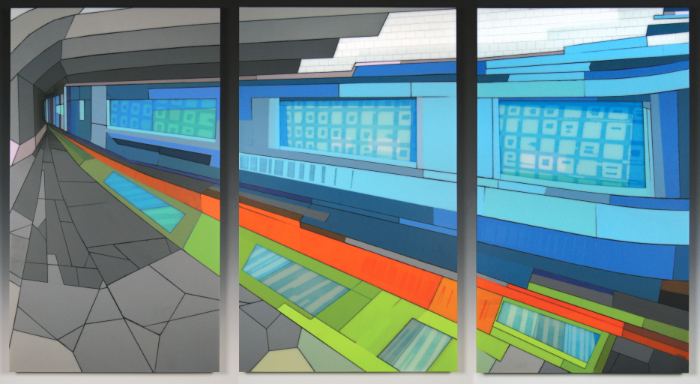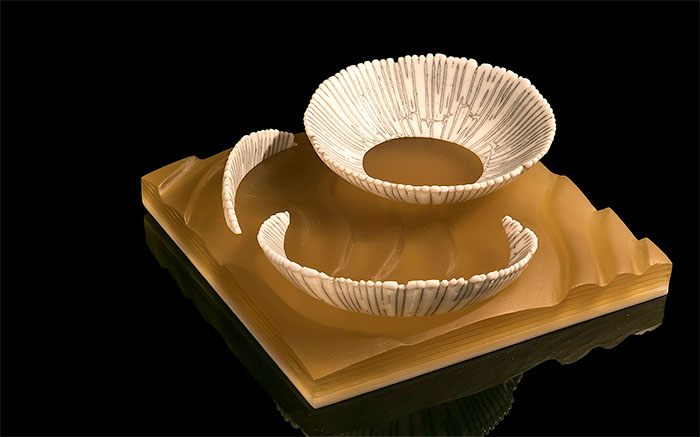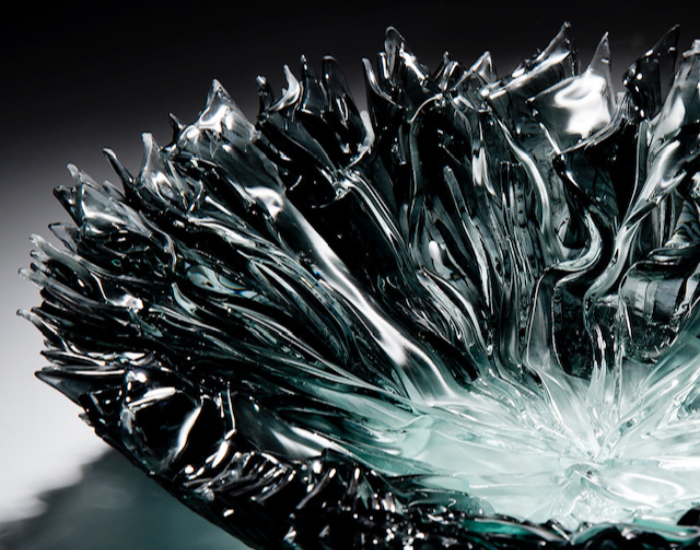
Channelling the beauty of Nature in glass
Wayne Charmer finds tranquillity in the natural world and wants to convey a sense of this through his organic glass forms. Linda Banks finds out more.
What led you to start working with glass?
I became interested in glass at an early age, mainly with my grandma’s collection of blown glass and lampworked figures. I remember these huge shelves on either side of the fireplace, full of colourful glass objects that amazed me. Looking back over the years, I think this is where my love for the material started.
I chose to do a 3D design course at Manchester Metropolitan University because it offered training in glass, among other materials. I had an offer for another university that was more craft based, which suited my interests more, but they didn’t have any glass working facilities.
At the time I knew nothing about the material and how you could work with it and that intrigued me. Therefore, the chance to learn all the basics, from cutting and kiln working to blowing glass was really exciting.
I knew that I wanted to continue working with glass and I thought the best option was kiln worked glass, because I knew I could easily buy my own kiln and set up a studio after I finished at university.
Once I graduated, I worked full time at the Craft Shop in the Royal Exchange Theatre in Manchester. There I learned a lot about the craft industry and discovered a lot of artists. I was also able to save up to buy my first kiln, which was only just over 40cm diameter. I had it running in the hallway of my flat and was able to make one bowl at a time to supply a gallery I was exhibiting with at the time.
I applied for a loan and grant from the Prince’s Trust, which enabled me to buy a larger kiln and then I was able to supply more galleries. Initially I set this up in my parents’ garage. That was great until I decided to move to London with my partner. There, I was lucky enough to a get a studio at Cockpit Arts, where I got access to business training and learned a lot about how I wanted to further my practice.

What glass techniques have you used, and which do you prefer?
I was fortunate to be able to explore most areas of working with glass while at university, from kiln working and blowing to mould making and cold working. Prepping the mould, cutting, layering, fusing and slumping the glass are the main techniques I use now. In my earlier work I focused on enamelling and metal inclusions. However, I don’t use those techniques as much these days.
I became intrigued with the process of preparing the glass for the kiln and then not knowing the outcome, either good or bad. But I enjoy learning from each firing. The mistakes are frustrating, but you learn from them.
Mostly I work with float glass. I enjoy exploiting its traits and seeing how far I can push it. It’s a very unforgiving material to work with and there are limits on how many times you can fire it. However, there is so much you can do with it, as long as you keep it clean before firing and get the firing schedules right. I feel free when working with float and I experiment more. In the past I’ve tried other, more expensive, glasses, but I found myself more tense during the making process, which affected the outcome.
Recently I’ve been experimenting with the mould making process for casting glass. Rather than limiting myself to float glass, I’m experimenting with glass intended for casting, which is a new venture for me.

What is your creative approach? Do you draw your ideas out or dive straight in with the materials?
At first, I was more interested in the process and seeing what happened to the glass during the firing, but, as you learn more about the material, you begin to understand how to apply this to your practice.
I start with an idea in my mind of what I want to create and then I fire lots of samples. I make notes on each firing and then I start applying these techniques to my inspiration, and my design evolves from there. If I have an idea in my mind, float glass enables me to feel free enough to go ahead and make it. If it works, that’s great. If it doesn’t, it’s disappointing, but you learn from it.
Now that I’m exploring the casting process, my approach is changing. I’m sketching more, to get the form right, before I start creating the mould.
A lot of your work is inspired by nature. What message(s) do you want to convey through it?
I find this difficult to put into words. It’s correct to say that my main source of inspiration is nature. This is where I feel most at ease – in the countryside, in a forest or by the sea. It’s a complete escape for me and my mind is calm there. In a city I’m less calm. I find cities exciting, but I don’t draw my inspiration from them and, as I’m getting older, I’m becoming less interested in the hustle and bustle of it all.
I don’t have any political messages I want to convey. I am inspired by the beauty of nature, and this is what I want to express in my work. The natural world is full of colour, texture, light and form, and it evolves. My aim is to channel this through my work.
Not only is nature a source of escapism, but I find escape in the making process, too. If I can echo this in my work, I’m thrilled.
What is your favourite tool or piece of equipment and why?
This is difficult to answer, because my latest piece of equipment is always my favourite until I buy something new. But my main piece of equipment, which allows me to create, is my kiln. Without it I would feel lost.
I remember getting my first small kiln and being so happy. Then, after receiving funding, I got the next size up and, a few years later, after saving up, I got the next size up again. Each time, it felt like a great achievement.
Last year, my kiln needed a repair. This meant I was without a kiln for a few weeks, for the first time in over 23 years. I had fired my glass too high in a mould and it melted into the elements. I was so frustrated with myself. It was really tough to be without it and I realised how much I missed using it and creating.
Do you have a favourite piece you have made? Why is it your favourite?
Again, my latest piece is usually my favourite! Looking back, I remember in the early days fusing a few sheets of glass with enamels and feeling content making clocks, small bowls and coasters. My aim then was to open a workshop with a gallery that was open to the public. However, I soon realised I wasn’t happy.
I started working on a larger scale and using a more time-consuming approach. The first piece I created with this process was the Coral bowl, where layers of glass were built into a mould. More time was spent cold working, and I enjoyed the discipline of patience that was needed to create just one piece. I believe this attention to detail shows in the finished work.
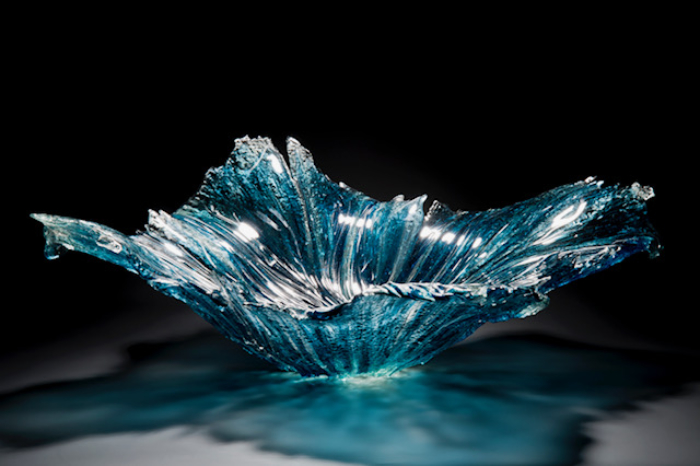
Last year I created a group of sculptural pieces called ‘Celestite’, which is one of my recent favourites. They are large, free-standing, slumped forms, with layer upon layer of cut glass fused into the body of each piece. I enjoyed working on this scale. It took time to create them, but I found the cutting of the glass and the layering very therapeutic.
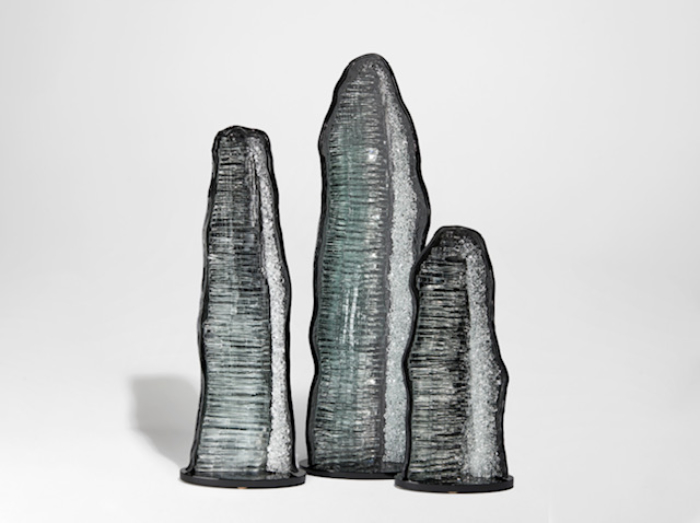
Where do you show or sell your work?
I sell my work through galleries and, sometimes, temporary exhibitions. My main gallery is the Vessel Gallery in London, which has been a great help over the years and very supportive. Originally, I approached them with a new body of work, aimed at the higher end of the market, when I was in my early 30s. With their assistance, I’ve been able to progress within my practice and create pieces of which I’m proud.
Early on in my career, without any real experience, I tried exhibiting through trade shows. The thought was to sell cheaper, smaller items on a bigger scale. I had lots of galleries and outlets selling my work, but I was terrible at keeping an eye on all of the stock. Plus, a lot of the work was on a sale-or-return basis, which was a nightmare to manage. I thought that having lots of galleries and seeing my creations everywhere was important, but I soon realised this wasn’t how I wanted to work. Now I’m more cautious about where I exhibit and consider carefully how I want my work to be seen.
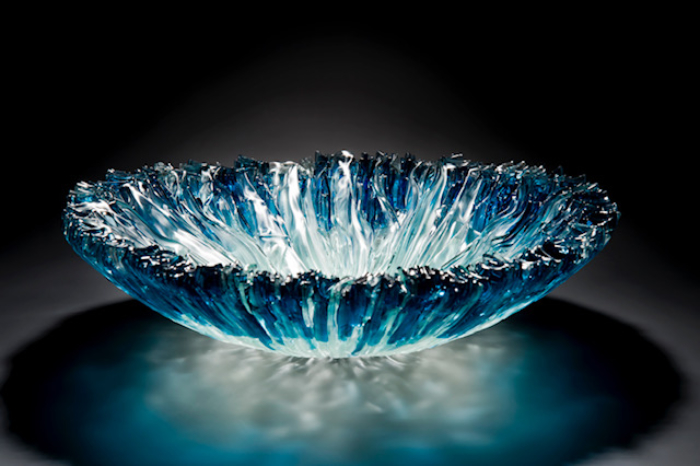
Do you have a career highlight?
I think that came when I started to focus on the larger pieces. I saw that there was interest in this work and that people would invest in something I had created. Early on in my career I would not have expected to see my work on a client’s private yacht or in a private jet.
While it is nice to make money from the sale of an item, I get the greatest satisfaction from knowing that someone is willing to invest in something I’ve made. It is the nicest compliment when someone buys your work, and this gives me the confidence to carry on making.
Who or what inspires you?
Aside from nature, I am inspired by other confident makers and creative people. I always admire the people who find it easy to talk about their work and who are openly proud of what they create and do not focus too much on the faults. These people should not be confused with those who shout about their success. It’s the reserved confidence that I admire.
I’m always in awe of those who don’t follow the norm and who bang their own drum. They inspire me to think bigger and better about how I live my life and how I create my work.
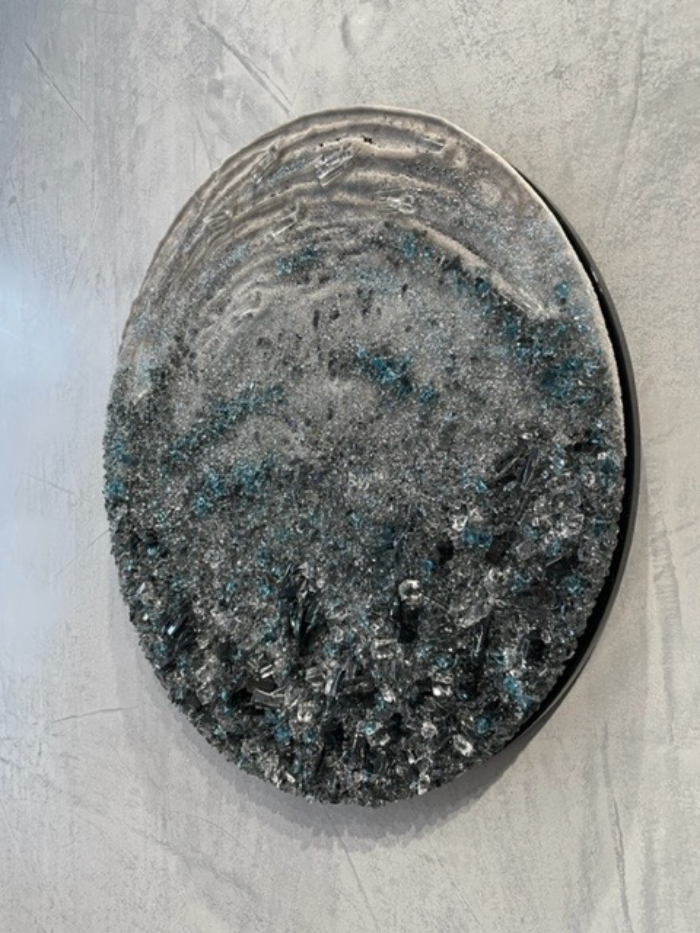
Did the coronavirus impact your work?
There was a direct impact at the start of the pandemic, as I was getting ready for my first solo exhibition in March 2020, which was cancelled. At first, I was disappointed. However, those feelings soon lessened as I watched the news and saw the immense effect it was having on people’s lives.
I received a few good commissions during the pandemic, which I wasn’t expecting, and it gave me time to reflect on my practice. I had difficulty sourcing basic materials, and prices increased a lot, but I was able to work around these challenges. They were all small issues and I consider myself lucky to be here and able to keep making.
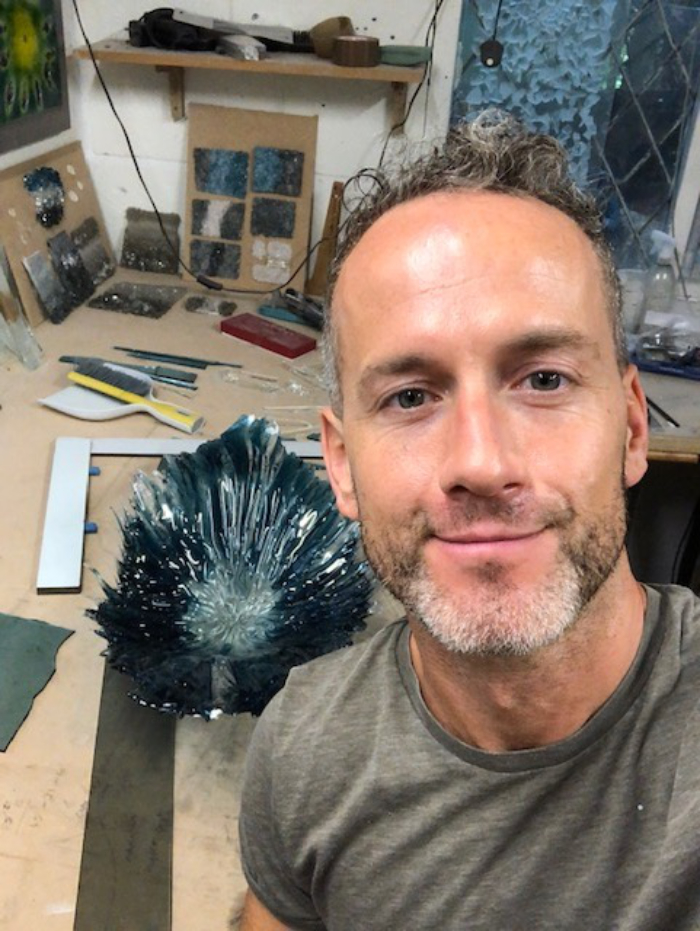
About the artist
Wayne Charmer became attracted to working with glass at university. He was drawn to the complex and challenging process of manipulating a material from a solid form to become fluid whilst in the kiln. He captures this fluidity in the final cooling process, which gives an organic feel to his work. The glass undergoes many transformations whilst firing and the unexpected is part of the attraction of working with glass.
Wayne was awarded a setting up business grant by the Prince’s Trust in 2002 and, in 2004, he received a Cockpit Arts Seedbed Award.
He has exhibited extensively throughout the UK and internationally and has work in the Turner Museum of Glass private collection.
Find out more via his website.
Main image: Detail of ‘Bloom’ by Wayne Charmer. Photo: Ester Segarra.
